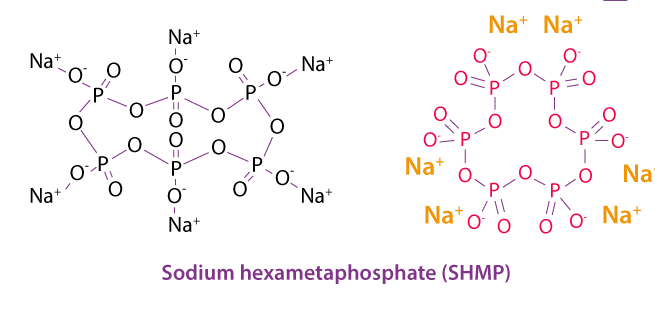Unlocking the Benefits of Sodium Hexametaphosphate
Are you curious about the wonders of sodium hexametaphosphate? Look no further! In this comprehensive guide, we will delve into the world of this versatile compound and uncover its myriad uses and benefits. From its role as a food additive to a water softener salt, sodium hexametaphosphate has proven itself to be an indispensable ingredient in various industries. Join us on this enlightening journey as we explore the fascinating properties and applications of sodium hexametaphosphate.
Sodium Hexametaphosphate
Sodium Hexametaphosphate, often referred to as SHMP, is a versatile compound with a wide range of applications across different industries. This white, crystalline powder is known for its ability to sequester various metal ions, making it an effective water softener salt. In the food industry, sodium hexametaphosphate is commonly used as a food additive due to its emulsifying and moisture-retaining properties.
One interesting aspect of sodium hexametaphosphate is its role in preventing scale formation in water systems by dispersing mineral deposits. This feature makes it a valuable component in detergents and cleaning products. Additionally, SHMP plays a crucial role in improving the texture and shelf life of processed meats by enhancing their moisture retention capabilities.
Food Additive
Food additives play a crucial role in the food industry, enhancing flavors, improving texture, and extending shelf life. One such additive that has gained attention is sodium hexametaphosphate. This versatile compound is used in a variety of foods to stabilize ingredients and maintain freshness.
Sodium hexametaphosphate acts as a sequestrant, binding with metal ions to prevent discoloration and rancidity in processed foods. Its ability to chelate metal ions makes it an effective additive for preserving the quality of food products.
In addition to its preservative properties, sodium hexametaphosphate also functions as an emulsifier and thickening agent in various food formulations. By helping ingredients mix uniformly and creating a smooth texture, it enhances the overall sensory experience of consuming these products.
Water Softener Salt
Water softener salt plays a vital role in maintaining your home’s water quality. By using water softener salt, you can prevent the buildup of limescale in your pipes and appliances. This helps to prolong the lifespan of your fixtures and ensures efficient water flow throughout your household.
When hard water passes through the resin tank filled with water softener salt, the ions causing hardness are exchanged for sodium or potassium ions, effectively softening the water. This process results in cleaner dishes, softer laundry, and smoother skin after bathing.
Choosing the right type of water softener salt is essential for optimal performance. Options include rock salt, solar salt, and evaporated salt pellets. Each type has its advantages depending on your specific needs and budget.
Regularly replenishing the supply of water softener salt is crucial to maintain softened water throughout your home. Keeping up with this maintenance task will help you reap all the benefits that come with having a reliable water softening system at home.
Uses
Sodium Hexametaphosphate, commonly known as SHMP, boasts a wide range of uses across various industries. In the food industry, it serves as a sequestrant and emulsifier in processed foods like canned fruits and vegetables, dairy products, and meat. Its ability to bind metal ions makes it an essential ingredient in water softening salts, preventing limescale buildup in appliances.
In personal care products such as toothpaste and mouthwash, sodium hexametaphosphate acts as a tartar control agent by inhibiting the formation of calcium phosphate precipitates on teeth. It is also utilized in industrial applications like water treatment to prevent scale formation in pipelines and boilers.
Moreover, SHMP finds its way into cleaning products for its ability to suspend soil particles and prevent re-deposition during washing cycles. Additionally, it plays a crucial role in enhancing the viscosity of drilling muds used in oil well drilling operations due to its dispersing properties.
The diverse range of uses for sodium hexametaphosphate showcases its versatility and importance across multiple sectors.
Preparation
Preparation of sodium hexametaphosphate involves a series of chemical reactions that transform simple ingredients into this versatile compound. The process typically starts with the combination of phosphoric acid and sodium hydroxide, resulting in the formation of sodium phosphate. Next, through a carefully controlled reaction, multiple molecules of sodium phosphate are condensed to form the final product – sodium hexametaphosphate.
This preparation method requires precise measurements and specific conditions to ensure the desired outcome. Once synthesized, sodium hexametaphosphate is commonly used in various industries for its water treatment properties and as a food additive for its ability to sequester metal ions effectively.
Understanding the intricate steps involved in preparing sodium hexametaphosphate sheds light on its significance and widespread application across different sectors.
Reactions
When it comes to sodium hexametaphosphate, understanding its reactions is crucial. This compound exhibits various chemical reactions based on its composition and the environment in which it is used.
In aqueous solutions, sodium hexametaphosphate can undergo hydrolysis, forming phosphoric acid. This reaction plays a role in adjusting the pH levels of water systems and contributes to its effectiveness as a water treatment agent.
Moreover, sodium hexametaphosphate can interact with metal ions present in water through chelation. By sequestering these ions, it helps prevent scale formation and improves the efficiency of detergents and cleaning products.
Additionally, when combined with certain minerals like calcium and magnesium, sodium hexametaphosphate forms soluble complexes that aid in water softening processes. These reactions highlight the versatility of this compound across different applications.
History
Sodium Hexametaphosphate has a rich history dating back to the early 20th century when it was first synthesized. Originally developed for industrial purposes, its versatile properties were soon recognized and utilized in various applications.
Over the years, sodium hexametaphosphate has evolved from being solely an industrial chemical to a multifunctional ingredient with widespread use in food processing, water treatment, and beyond.
Its effectiveness as a sequestrant and emulsifier quickly gained popularity among manufacturers looking to improve product quality and shelf life. The compound’s ability to bind metals and prevent scale formation made it indispensable in many industries.
As research continued, new insights into sodium hexametaphosphate’s molecular structure and interactions further enhanced its applications. Today, this compound stands as a testament to scientific innovation and continuous improvement in chemistry.
Safety
When it comes to using sodium hexametaphosphate, safety is a top priority. This food additive and water softener salt should be handled with care to avoid any potential risks. It’s important to follow the recommended guidelines for usage and storage provided by manufacturers.
As with any chemical substance, exposure should be minimized to prevent adverse effects on health. Protective equipment such as gloves and goggles may be necessary when handling sodium hexametaphosphate in its pure form. Proper ventilation in work areas can also help reduce the risk of inhalation.
In case of accidental ingestion or contact with skin or eyes, immediate medical attention is advised. Keep this product out of reach of children and pets to prevent unintended exposure. By understanding the safety measures associated with sodium hexametaphosphate, users can ensure its proper use without compromising their well-being.
Conclusion
Sodium hexametaphosphate is a versatile compound that serves various purposes in industries such as food production and water treatment. Its ability to act as a food additive, water softener salt, and corrosion inhibitor makes it an essential component in many applications.
Understanding its uses, preparation methods, reactions, history, and safety considerations can help maximize the benefits of sodium hexametaphosphate while ensuring safe handling practices. By leveraging its unique properties effectively and responsibly, this compound can continue to play a vital role in enhancing processes across different sectors.
As research and technology progress, further exploration into the potential applications of sodium hexametaphosphate may uncover even more benefits for diverse industries. Embracing innovation and sustainability will be key to unlocking the full potential of this valuable compound for future generations.







